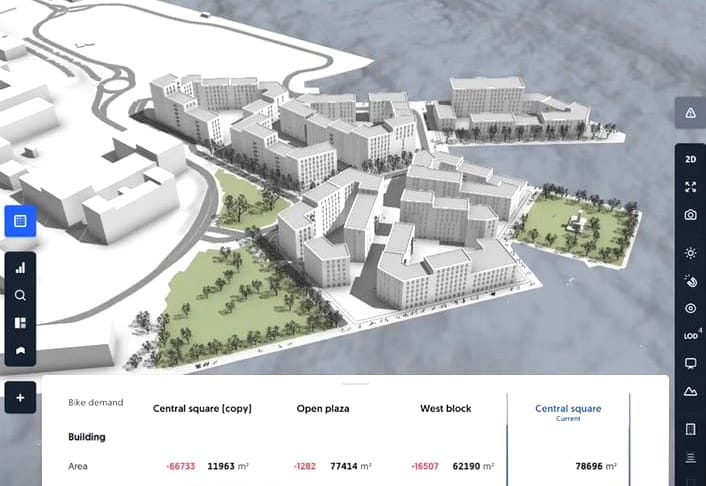Spacio, the AI parametric tool to simplify design
Spacio is a tool to design architecture project faster at early stage and unleash the power of AI and parametric design.

As an architect, you're well aware that the early stages of a project are critical to its overall success. However, traditional BIM tools often fall short during this phase, prioritizing precision over speed.
In the initial stages, where creativity and rapid iteration are key, slowing down to build exact models can hinder the creative flow.
Tools like Revit and Archicad, while excellent for detailed work, can bog down architects looking to explore quick design options.
The Challenge with Traditional BIM Tools
Decisions made during the early stages of architectural design can significantly impact the entire project.
Unfortunately, most BIM software is optimized for accurate, detailed modeling rather than fast, flexible design exploration.
As a result, architects often find themselves constrained, unable to quickly generate multiple design versions and analyze their impact. This is where next-gen parametric design tools come into play.
A New Wave of Tools: AI and Parametric Design to the Rescue
In response to these challenges, a new generation of web-based, AI-driven tools is emerging, designed specifically for early-stage architectural design.
These platforms prioritize speed and collaboration, empowering architects to experiment with different project configurations in real-time. Thanks to AI and parametric design capabilities, architects can sketch multiple versions of a project in minutes rather than hours.
Moreover, these tools come equipped with advanced analysis features, previously only available to engineers.
Carbon emissions, thermal efficiency, and daylight exposure can now be factored into designs right from the get-go. This means architects can optimize their plans quickly and efficiently, without waiting for complex calculations to come through.

Spacio: AI and Parametric Design for Architects
One standout tool in this evolving space is Spacio, a parametric design platform tailored specifically for architects in the early stages of their projects. I recently had the opportunity to sit down with Franz Forsberg, CEO and co-founder of Spacio, to dive deeper into how this innovative tool works.
You can check out the full interview here.
Spacio offers a unique solution by combining the power of parametric design with an intuitive, web-based interface.
Unlike traditional parametric tools like Grasshopper or Dynamo, which come with steep learning curves, Spacio is designed to be accessible and collaborative.
It allows architects to generate quick sketches and design iterations without the technical complexities of older tools.
The Democratization of Parametric Design
What truly sets Spacio apart is how it democratizes parametric design.
Instead of being confined to a small group of highly specialized users, Spacio opens up these capabilities to a broader range of architects. The platform allows for seamless sharing with team members, clients, and stakeholders, making collaboration easier than ever.
However, Spacio isn't designed for creating fully detailed building models. Instead, it's a tool for quickly communicating design ideas, much like the blue foam sketch models popularized by OMA (Rem Koolhaas).

But there's a twist—Spacio leverages real-world urban data and offers instant performance analysis. This means architects can understand the environmental and functional impact of their designs almost instantly and refine them accordingly.
From Concept to BIM: Exporting with Ease
Once you're happy with your design, Spacio allows for easy export of the geometry to your preferred BIM software. Using the IFC format, it's compatible with most major design tools, making it a seamless addition to any architect's workflow.
Why Spacio is a Game-Changer for Architects
Spacio is changing the game for architects by offering a fast, flexible, and intuitive platform for early-stage design.
By incorporating AI and parametric design, architects can explore multiple project options, perform quick analyses, and present ideas to clients with ease—all before jumping into detailed modeling in BIM tools.
Discover my AI online courses for architects
To learn how to use AI in practice : AI assistant, AI renders, AI for parametric and BIM...